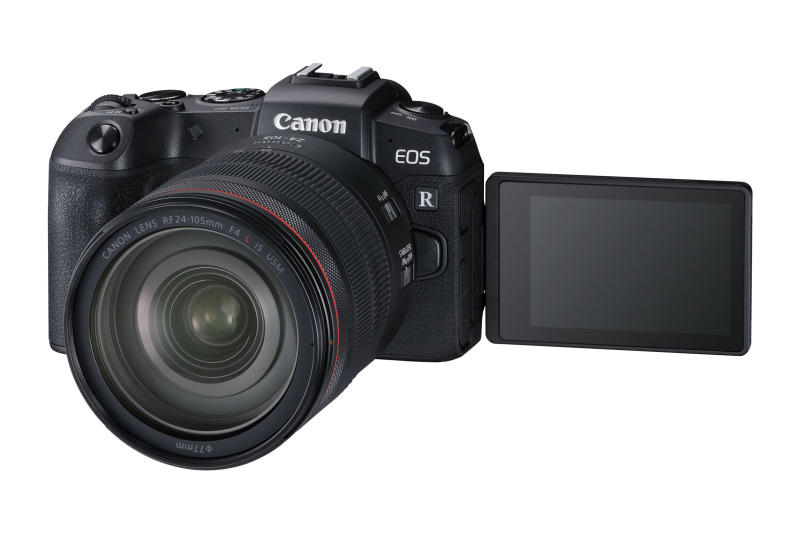Tech review: Canon EOS RP a solid but affordable full-frame mirrorless camera
Sign up now: Get ST's newsletters delivered to your inbox

The Canon EOS RP is an entry-level model but no slouch.
PHOTO: CANON
Trevor Tan
Follow topic:
The full-frame mirrorless camera segment has really heated up in recent months.
Canon jumped on this bandwagon, arguably the current pinnacle of the mirrorless camera genre, last September with the EOS R.
It has now delivered the second model, the EOS RP.
The RP is an entry-level model but no slouch. This is clear from its core specifications - it has the same 26.2-megapixel full-frame image sensor as the Canon EOS 6D Mark II DSLR camera and the same Digic 8 image processor as the EOS R.
It also has 4,779 selectable autofocusing (AF) points powered by Canon's Dual Pixel CMOS AF technology. It is said to shoot up to 5 frames per second (fps) and has "the world's fastest AF speed" of 0.05 seconds.
Its 3-inch touchscreen display is able to rotate 270 degrees - great for selfies. It has an electronic viewfinder (EVF) for those who like to compose pictures the old-fashioned way, by peeking through the viewfinder.
Its body is 175g lighter and significantly smaller than the EOS R, but made from magnesium alloy like the latter, and is said to resist dust and moisture.
But being an entry-level model, it does come with some compromises. For instance, its shooting rate of 5fps is not considered especially fast. It lacks an in-built image stabiliser, has a smaller and lower-resolution touchscreen and only one SD card slot.
-
TECH SPECS
PRICE: $1,999 (body only)
IMAGE SENSOR: 26.2-megapixel full-frame CMOS
DISPLAY: 3-inch tiltable touchscreen LCD with 1,040,000 dots; Electronic viewfinder with 2,360,000 dots
SENSITIVITY: ISO 50 to 102,400
SHOOTING SPEED: Up to 5 frames per second
CONNECTIVITY: Bluetooth, Wi-Fi
WEIGHT: 485g (body with battery and memory card)
RATING
FEATURES: 4/5
DESIGN: 4/5
PERFORMANCE: 4/5
BATTERY LIFE: 3/5
VALUE FOR MONEY: 5/5
OVERALL: 4/5 [ST Tech Editor's Choice]
When shooting 4K videos, it uses contrast AF instead of the more superior Dual Pixel CMOS AF technology. It also records at the 1.6x crop factor (compared with 1.78x with the EOS R) and with a frame rate of 25fps (compared with the EOS R's 30fps).
Thankfully, Canon did not cut any corners when it comes to the RP's body design and button layout.
Despite its compact size, the ergonomic rubberised grip is able to accommodate all my fingers for a good grip of the camera.
Button layout is well-conceived, with the mode dial and two command dials sited on the top right for easy access with the thumb and right index finger.
A function button and dedicated video recording button are also located here.
The slight minus is the lack of a mini-joystick to move the AF point. However, this is mitigated by the camera's touch and drag AF function, which allows you to move the AF point using the touchscreen while your eye is behind the EVF.
I test the EOS RP with the RF 24-105mm f/4.0 lens that came with the review set, as well as my own EF 24-105 f/4 lens using the Canon Mount Adapter EF-EOS R.
The AF speed using the native RF lens is instantaneous in bright lighting conditions.
Under dim lighting, AF can take up to two seconds.
Using the EF lens, I do not notice any difference in the AF performance compared with the RF lens.
Operation-wise, the RP powers up in 0.8 seconds and shuts downs in 0.7 seconds - much faster than the average two-second power-up and shutdown times of its peers.
Using an SD card with a writing speed rated at 94MB per second, I manage to shoot 98 frames in 31.6 seconds before the buffer ran out. It has more buffer size than most DSLR cameras.
Image quality is excellent and sharp, while colour rendition is superb and accurate.
Image noise is non-existent even at ISO 3,200 and you have to go up to ISO 25,600 and beyond to notice significant noise artefacts and loss of details.
Battery life is rated at 250 still images on a full charge. I get 300 stills in my tests, which is still average at best.
A plus point, though, is that the camera can be charged via its USB-C port.
Perhaps the best part of the RP is its pricing. At $1,999 (body only), it is $1,400 cheaper than the EOS R.
This makes it very enticing for Canon EOS DSLR users who are wondering if they should upgrade to a new DSLR camera or switch to a full-frame mirrorless one.
In fact, I am one of them and think I might finally upgrade my ageing EOS 7D to the RP. And I do not need to win Toto to do that.

